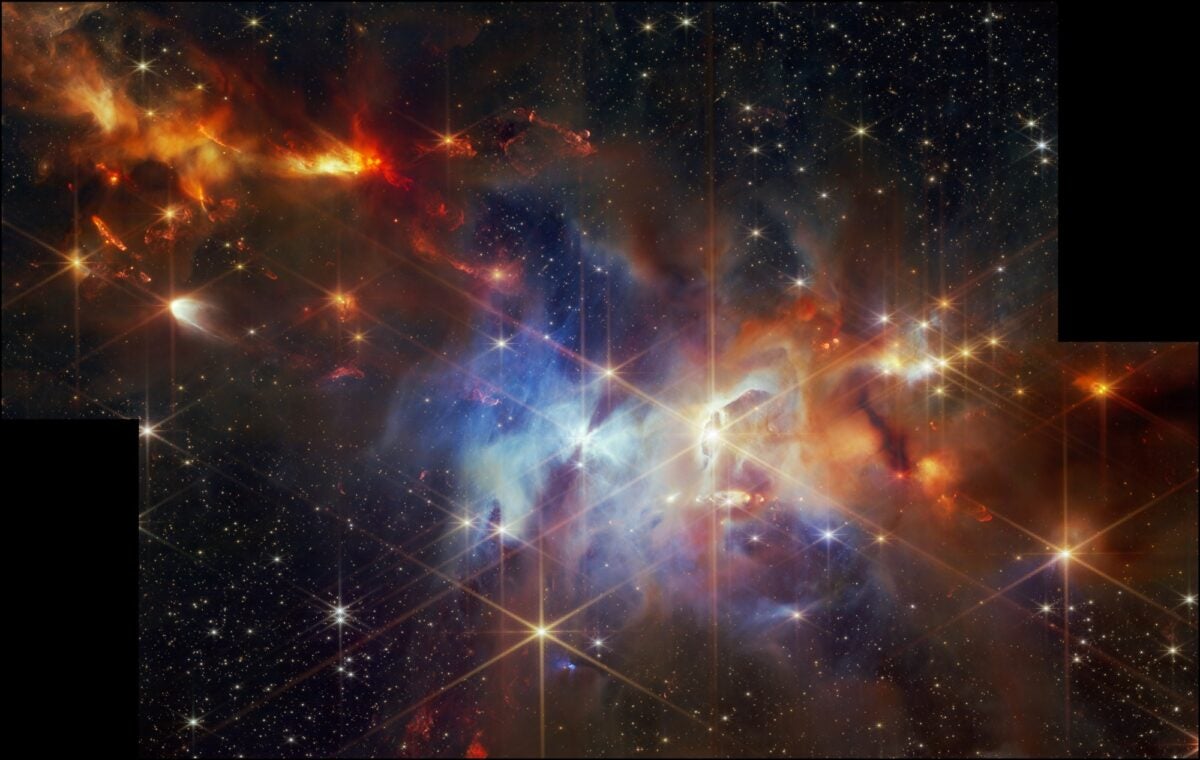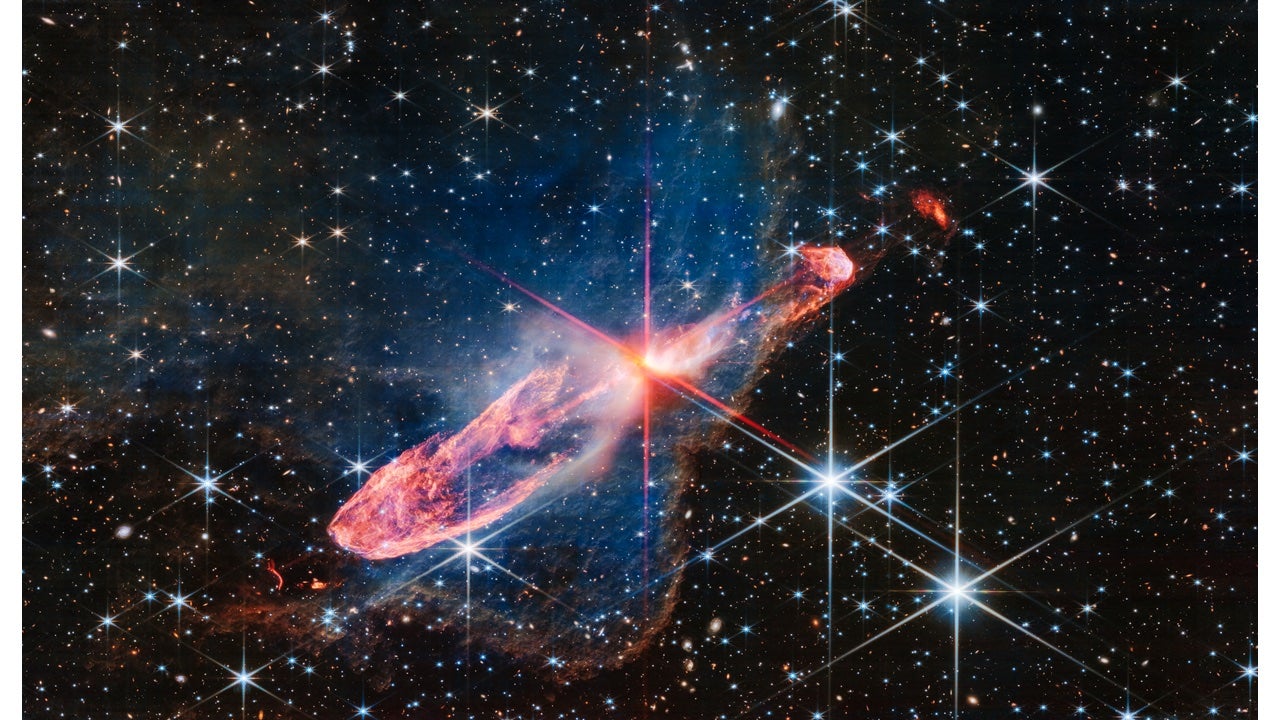
Within the Serpens Nebula, found 1,300 light-years from Earth, the James Webb Space Telescope (JWST) has spotted the jets of several young protostars lining up in the same direction — a first.
JWST’s new image, taken with its Near Infrared Camera, NIRCam, reveals a fascinating look at the forming baby stars. It captures outflows as they emerge from the newborn stars and interact with the surrounding gas and dust. These jets are almost all aligned in the same direction. The study, published on arXiv as a pre-print, suggests that most of the stars and their outflows align because they formed together at the same time from the same region of the parent cloud, thus inheriting its spin.
“Astronomers have long assumed that as clouds collapse to form stars, the stars will tend to spin in the same direction,” said study co-author Klaus Pontoppidan, of NASA’s Jet Propulsion Laboratory, in a press release. “However, this has not been seen so directly before. These aligned, elongated structures are a historical record of the fundamental way that stars are born.”
Spinning stars
As a gas cloud collapses into a star, it also spins faster. The infalling material aligns into a disk, whose magnetic field ejects some of the material in opposite directions as jets. In the JWST image, these jets are visible as bright streaks of red light at top left. The red color artificially represents infrared emission from molecular hydrogen and carbon monoxide.
“We’re now able to catch these extremely young stars and their outflows, some of which previously appeared as just blobs or were completely invisible in optical wavelengths because of the thick dust surrounding them,” said study lead author Joel Green, an astrophysicist at the Space Telescope Science Institute in Baltimore.
JWST has observed bipolar jets before in other so-called Herbig-Haro (HH) objects, including HH 46/47 and HH 211.

The JWST observing in infrared
Scientists will next use JWST’s Near-Infrared Spectrograph (NIRSpec) to probe the cloud’s chemistry. The team hopes to better understand how the building blocks of life, such as water and carbon monoxide, survive in regions where stars are born and go on to be incorporated into planets when they form. They will compare the results of the Serpens Nebula with the chemical make-up of the planet-forming disks around older but similar stars.
“Looking at the abundance of these critical compounds in protostars just before their protoplanetary disks have formed could help us understand how unique the circumstances were when our own solar system formed,” said Pontoppidan.









